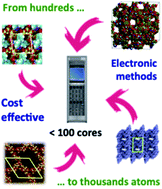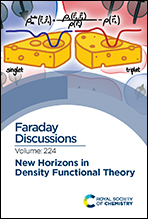Cost-effective composite methods for large-scale solid-state calculations†
Abstract
Following the development in recent years of progressively more accurate approximations to the exchange–correlation functional, the use of density functional theory (DFT) methods to examine increasingly large and complex systems has grown, in particular for solids and other condensed matter systems. However the cost of these calculations is high, often requiring the use of specialist HPC facilities. As such, for the purpose of large-scale high-throughput screening of material properties, a hierarchy of simplified DFT methods has been proposed that allows rapid electronic structure calculation of large systems, and we have recently extended this scheme to the solid state (sol-3c). Here, we analyze the applicability and scaling of the new sol-3c DFT methods to molecules and crystals composed of light-elements, such as small proteins and model DNA-helices. Furthermore, the calculation of the electronic structure of large to very large porous systems, such as metal–organic frameworks and inorganic nanoparticles, is discussed. The new composite methods have been implemented in the CRYSTAL17 code, which efficiently implements hybrid functionals and enables routine application of the new methods to large-scale calculations of such materials with excellent performance, even with small-scale computing resources.

- This article is part of the themed collection: New horizons in density functional theory


 Please wait while we load your content...
Please wait while we load your content...